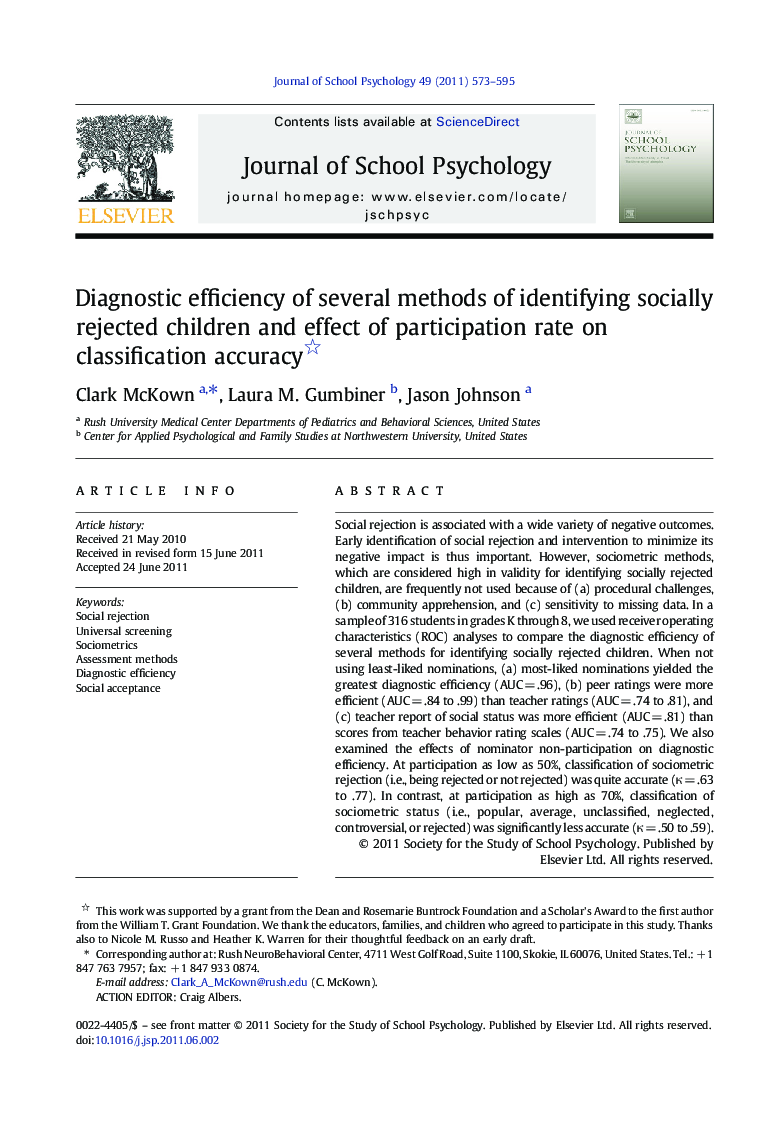| کد مقاله | کد نشریه | سال انتشار | مقاله انگلیسی | نسخه تمام متن |
|---|---|---|---|---|
| 363795 | 620744 | 2011 | 23 صفحه PDF | دانلود رایگان |

Social rejection is associated with a wide variety of negative outcomes. Early identification of social rejection and intervention to minimize its negative impact is thus important. However, sociometric methods, which are considered high in validity for identifying socially rejected children, are frequently not used because of (a) procedural challenges, (b) community apprehension, and (c) sensitivity to missing data. In a sample of 316 students in grades K through 8, we used receiver operating characteristics (ROC) analyses to compare the diagnostic efficiency of several methods for identifying socially rejected children. When not using least-liked nominations, (a) most-liked nominations yielded the greatest diagnostic efficiency (AUC = .96), (b) peer ratings were more efficient (AUC = .84 to .99) than teacher ratings (AUC = .74 to .81), and (c) teacher report of social status was more efficient (AUC = .81) than scores from teacher behavior rating scales (AUC = .74 to .75). We also examined the effects of nominator non-participation on diagnostic efficiency. At participation as low as 50%, classification of sociometric rejection (i.e., being rejected or not rejected) was quite accurate (κ = .63 to .77). In contrast, at participation as high as 70%, classification of sociometric status (i.e., popular, average, unclassified, neglected, controversial, or rejected) was significantly less accurate (κ = .50 to .59).
Journal: Journal of School Psychology - Volume 49, Issue 5, October 2011, Pages 573–595